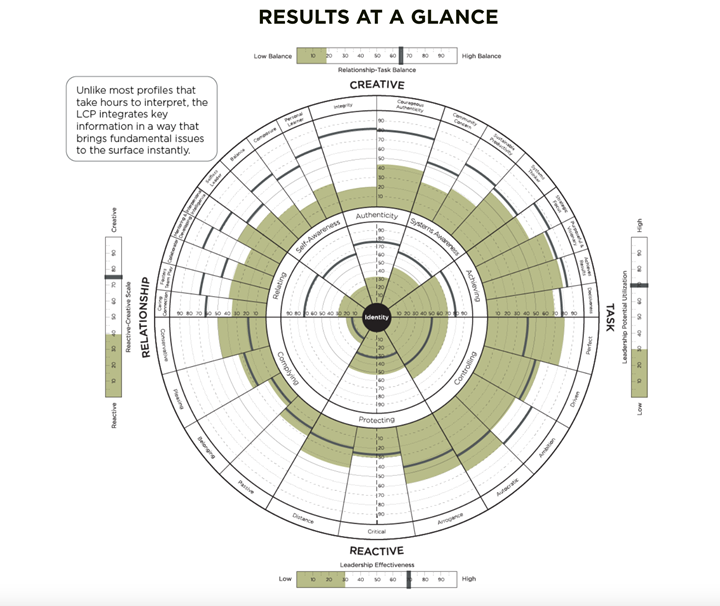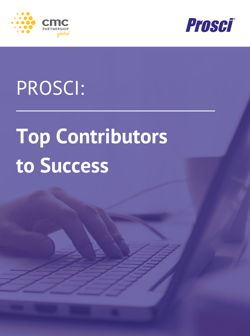We read it everywhere: magazines, newspapers, interviews with senior executives and HR specialists. When it comes to change management, the most important element for success is having an active and visible sponsor. This means that the sponsor has to be involved throughout the project lifecycle by supporting the team and championing the change.
Unfortunately, it is not unusual for a sponsor to embrace a different behaviour described in the Prosci Research on Best Practices in Change Management known as "the disappearing sponsor". What does it mean? An example of this is a sponsor announcing a change initiative in a town hall or via email who then disappears, without realising the benefits of the change initiative! It is not a surprise for an individual to be flabbergasted when they are informed that it takes more than "showing up in the beginning" to be an effective sponsor for a change management initiative.
What's covered in this blog:
- What does it take to be an effective sponsor during a change management initiative?
- What is the Leadership Circle?
- How can an organisation identify what elements of a leader could be improved?
Generally, a sponsor believes that the "operational activities" (e.g. communicating about the change with the impacted employees on an ongoing basis and throughout the whole project lifecycle, engaging the change team by being available and accessible to the impacted groups) would be carried out by the change management practitioner. This thinking is not supported by the research. Prosci's Best Practices in Change Management research clearly highlights that 50% of people affected by change prefer organisational messages to be given by executives and 25% prefer messages from senior leaders. The stats then show that team leaders impact change by 3% and change management team members, 0%. Clearly, they are not the best choice when it comes to identifying the individual that needs to be in the employee facing role. More on other roles in change management here.
Download: Top Contributors to Success
What does it take to be an effective sponsor during a change management initiative?
It's all about the ABC Roles. The ABC's of Sponsorship are:
- Be Active and visible throughout the project: this means, for example, communicating about the change, regularly attending key project meetings such as status meetings. roadshows, project kick-off announcements and town halls.
- Build a coalition of sponsors: by coaching and maintaining a network of active and committed change agents, communicating the importance of role modelling the change, and encourage senior leaders to participate in and support the change. It also includes, cultivating management support of the project, ensuring alignment of expectations among mid-level and front-line managers, clarifying roles and soliciting management feedback.
- Communicating directly with the employees: this is linked to setting the direction and focus by communicating the end vision, create awareness about the change and the specifics of the change. The sponsor should be be the advocate of the change to impacted groups and a role model by vocally and visibly supporting the change and explaining the "what's in it for me" (WIIFM) of the change to impacted groups. They should be also be open and willing to answer questions from impacted groups that might show resistance helps.
In addition to the roles that an effective sponsor should fulfil, it is key for this individual to be a recognised leader with sponsorship experience. Therefore, it is not enough to be appointed as the sponsor of an initiative to be successful at change management: the individual that is invested in this role needs to have authority in the organisation and be an accepted leader. This is where we can see the intersection between the Prosci Methodology and The Leadership Circle. But how do you assess the level of competency of the leaders in your organisation? How do you support them in becoming even more effective?
What is the leadership circle?

The Leadership Circle (TLC) is a model of leadership and a framework for development that pulls together the best theory and research in the fields of leadership, organisational development and psychology. It provides a complete leadership development system for cultivating leaders in the organisation. One of the key assumptions of the Leadership Circle is that senior leaders need to modify the way they go about changing their organisations because businesses do not change, individuals do. Unless leaders do their own development work, they are not likely to create successful business transformations and change.
There are 3 key elements that have to be considered when developing an effective leader according to the model of leadership:
- Leadership Competencies: Also known as the outside game of leadership. Developing leaders of organisations must go beyond focusing on their own competencies to become an effective leader. Their own competencies are a piece of the puzzle, not the total picture.
- Leadership Consciousness: The inner game of leadership is considered in addition to the leadership competencies. Leadership consciousness is the inside game of leadership and relates to what guides the leader, how they define themselves and what they believe.
- Leadership Process: Leaders are responsible for the effective allocation of resources (people, time, money) and this relates to management systems that allow an organisation to be organised for success.
Before you stop reading because you think this is getting too hypothetical, we invite you to think about how you describe an effective leader. You would usually use words like integrity, honesty, passion, vision, risk-taking, compassion. These are only a handful of the qualities that come to mind and go beyond competencies and skills to include character and conviction. Robert J. Anderson, the Leadership Circles creator, highlights that a breakthrough in the inner game (leadership consciousness) can result in sudden shifts in the effectiveness of the outer game (leadership competencies) which in turn, results in higher performance gains for the organisation.
The Leadership Circle carried out a study involving 2000+ businesses that shows that leadership effectiveness is a primary contributor to business performance. If an organisation can improve leadership effectiveness, they are 38% more likely to see greater business performance.
How can an organisation identify what elements of a leader could be improved?
It is possible to conduct a leadership 360˚ assessment for the Leadership Circle Profile, allowing individuals to understand how key stakeholders – for example their bosses, peers or direct reports – experience their leadership. The difference between The Leadership Circle Profile and other 360˚ feedback tools is that it is the first competency tool to measure both the inner and outer aspects of the individual's leadership qualities. The report created as a result of the assessment is not only a list of behavioural competencies! In fact, it is organised into a system for understanding human behaviour and development, and helps to make sense of the relationship between the many dimensions of the individual being evaluated.
So, how is a leader's profile assessed? The Leadership Circle Profile measures 18 Leadership Competencies. These competencies have been well researched and define the most critical behaviours and skill sets required for an effective leader. There is also a second layer of internal assumptions. Internal assumptions relate to how we think and our habit of thought which determines a great deal of our behaviour. This Profile measures 11 Internal Assumptions that limit the effectiveness of the individual's leadership.
The creative leadership competencies measure key behaviours and internal assumptions that lead to high fulfilment, high achievement leadership. Creative leadership competencies include being able to relate to others, self-awareness, authenticity and system awareness. Conversely the reactive leadership styles reflect inner beliefs that limit effectiveness, authentic expression, and empowering leadership. Reactive leadership styles include controlling behaviours, protectiveness and compliance.
The 18 competencies are split between:
- Creative competencies: well-researched competencies that measure how you achieve results, bring out the best in others, lead with vision and enhance your development. Creative leaders also act with integrity and courage and set out to improve organisational systems. Creative competencies are most likely to result in effective leadership.
- Reactive styles/Reactive Tendencies: leadership styles emphasizing caution over creating results, self-protection over productive engagement, and aggression over building alignment. These self-limiting styles focus on gaining the approval of others, protecting yourself, or getting results at the expense of others. Reactive tendencies are linked to leaders that react to circumstances.
The creative competencies and reactive styles need to be read within the leader's operating system, which refers to the internal assumptions (beliefs) that run behaviour in both domains. The Leadership Circle Profile increases awareness of the operating system to create change in behaviour. Reactive styles are driven by a willingness to reduce fear in the operating system and see the running of an organisation as a game which they try not to lose. A reactive individual tends to react towards increasing safety, without even realising it. When it comes to the creative operating system, the leader is focused on playing the game on purpose to create the future that the organisation needs.
Being reactive when sponsoring a change initiative is usually not conducive to success. Prosci research clearly shows that the effective sponsor is someone who possesses creative competencies. Competencies like authenticity, self-awareness and the ability to relate to others in a way that brings out the best in the people within the organisation are needed for an effective leader.
There is a clear parallel that can be drawn between a creative leader and an effective sponsor, therefore there is a strong case to support leadership in your organisation to strategically develop creative competencies.
Interested in Learning More?
At CMC Partnership Global we believe in providing excellent service to our clients. We partnered with Prosci because they have developed one of the most effective change management methodologies in the world. Based on 20 years of research, it has been adopted by some of the most prominent organisations worldwide, including Microsoft and in the public sector, including the UK Government.
More and more clients are approaching CMC Partnership Global and asking for support in their change management journey and are realising the importance of supporting the development of creative competencies in their leaders. If you would like to develop your organisations change capability and build creative leadership skills within your sponsors, CMC Partnership Global offers a full Leadership Circle Assessment. Our Prosci Certified Advanced Instructors, who are accredited business coaches and The Leadership Circle Certified, will guide you through what The Leadership Circle entails, how to leverage it to determine your Leadership Profile and define next steps.
This service is available in English and Italian. To find out more information about how we can support your organisations’ needs, you can book a meeting with Isabella Brusati here or send an email to isabella.brusati@cmcpartnership.com.



